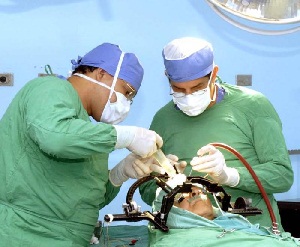 Thanks to the creation and development of original and patented neurological and general biological restoration programs, over 130,000 people from 94 countries across the world have been successfully treated at the International Center of Neurological Restoration (CIREN), since its creation February 26, 1989, by Fidel Castro.
Thanks to the creation and development of original and patented neurological and general biological restoration programs, over 130,000 people from 94 countries across the world have been successfully treated at the International Center of Neurological Restoration (CIREN), since its creation February 26, 1989, by Fidel Castro.
Twenty-seven years later, “This institution which develops and promotes the transfer of advanced neurological and functional neurosurgical technology to other specialist facilities within the country’s public health system, is open to the world just as the world increasingly embraces the contribution offered by its certified international health services, characterized by deep sense of humanity which constitutes the cornerstone of is vision and mission to restore hope,” stated María del Pilar Vilá, CIREN Promotion and Marketing specialist.
Over almost 30 years, staff at CIREN have gained great international prestige for their high quality scientific work, basic and clinical research efforts, as well as the treatment offered to Cuban and International patients with the aim of improving their quality of life, she noted. “For example, of a total 5,508 outpatient treatments, 4,928 for Cubans and 580 international patients,” she explained.
”One of the institution’s main achievements is its development of effective surgical techniques and procedures to treat refractory epilepsy in adults; meanwhile collaborative efforts with other facilities to develop a treatment program for children are currently underway. CIREN is also renowned for its multi-disciplinary approach to neurology, while its surgical procedures to treat Parkinson’s disease are gaining recognition, with results constantly improving and technology transfer at both a national and international level,” noted the specialist.
Other priorities for the institution include implementing pallidotomyprocedures to treat dystonias, as well as continuing work on projects, ranging from basic research to therapeutic methods to treat different forms of autism in children.
The expert went on to highlight CIREN’s longstanding use and validation of computerized stereotactic planning systems (STASSIS), which guarantee maximum precision in stereotactic neurosurgery planning. “The system allows us to manipulate images and helps us obtain the stereotactic parameters and other necessary measurements; it also provides image guidance for brain surgery procedures.”
She also mentioned another of the facility’s computer systems – the NDRS version 6.0 for deep brain registering during ablativebrain surgery or deep brain stimulation (DBS) procedures, 2,342 of which have been performed nationally and internationally (in Cuba, Spain, Argentina, and Chile) to treat conditions associated with movement disorders.